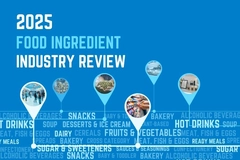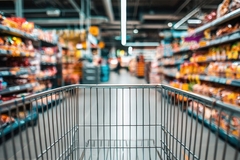
- Industry news
Industry news
- Category news
Category news
- Reports
- Key trends
- Multimedia
Multimedia
- Journal
- Events
- Suppliers
- Home
- Industry news
Industry news
- Category news
Category news
- Reports
- Key trends
- Multimedia
Multimedia
- Events
- Suppliers
Fears grow that overfishing will result in stocks having “no chance to recover” as Europe sets limits for 2021

01 Sep 2020 --- Ocean lobby groups and NGOs have been left reeling following the latest European Commission proposal for Baltic fishing limits for 2021. While they welcome plans to preserve fish stocks as “promising,” the fishing limits for Western Baltic herring and other fish do not go anywhere near far enough and have prompted grave concern that overfishing is still far too high, leaving the overfished population “with no chance to recover.”
“Overall, this proposal is a marked improvement on the years before. The Western herring element is a disappointment, but the Commission has otherwise made clear that Maximum Sustainable Yield is a limit that must be respected and that sustainable fisheries management is crucial to restoring the health of the whole Baltic sea ecosystem,” Rebecca Hubbard, Programme Director for Our Fish tells FoodIngredientsFirst.

The months ahead are considered a real “tipping point” by ocean environmentalists and advocates of stemming the extent of fishing in the Baltic. The European Commission’s latest proposal of Baltic fishing limits for 2021 includes revised total allowable catches (TACs) and continued 2020-implemented measures to protect fish populations.
They include proposals to reduce the by-catch TAC by 70 percent for eastern cod, reduce the TACS by 11 percent for Western Baltic cod and reduce the total allowable catches by 50 percent for herring. Meanwhile, the EC plans to increase catches for sprat and salmon while maintaining current catch levels for plaice.
“Unfortunately, the health of the Baltic, and all of the fishing industries depending on it, are still suffering as a result of decades of mismanagement. It’s recovery will take time, but we hope this proposal and the Council’s decisions are the turning point for committing to this recovery,” Hubbard highlights.
 In light of the “poor state” of the Baltic Sea ecosystem, NGOs are calling for all Baltic countries to urgently address the environmental and socio-economic crisis.Reeling in the fishing limitations
In light of the “poor state” of the Baltic Sea ecosystem, NGOs are calling for all Baltic countries to urgently address the environmental and socio-economic crisis.Reeling in the fishing limitations
Each year, the International Council for the Exploration of the Sea (ICES) provides scientific advice for fishing limits in EU seas, which the Commission uses as the basis for its proposal for fishing opportunities. The Commission’s proposal details the restrictions on fishing of the following six fish:
Eastern cod: Despite the Commission’s efforts for the past two years to revitalize the eastern cod population in the Baltic, its stock size has decreased substantially. The Commission now proposed to reduce the by-catch TAC by 70 percent. It will also maintain all previously implemented measures, including extending the existing spawning closure period in time and scope and banning recreational fishing in areas where eastern Baltic cod is most present.
Western Baltic cod: The Commission proposes to reduce the TACS by 11 percent and to maintain the 2020 spawning closure period in the entire area. This includes a limit for recreational fishers of five specimens per day and two specimens during the closure period. Moreover, in the deeper waters of the eastern part, the TAC use is limited to by-catches and recreational fishing continues to be forbidden.
Plaice: Against the ICES’s advice allowing for an increase, the Commission proposes maintaining the TAC level unchanged to protect the cod stocks. As cod is an unavoidable by-catch in plaice fisheries, these are in poor condition.
Sprat: Similarly to plaice, the ICES advice for sprat would allow for an increase. The Commission proposes to maintain the TAC level unchanged. This is because sprat and herring are caught in mixed fisheries, leading to the TAC for central Baltic herring to be decreased significantly. Moreover, sprat is a prey species for starving cod, which is “not in good condition,” the Commission details.
Salmon: In line with the ICES advice, the Commission proposes to increase the TAC by 9 percent. However, based on the ICES advice, the Commission proposes to reduce the fishing levels for the Gulf of Finland by 10 percent.
Herring: The Commission proposes to reduce the total allowable catches by 50 percent. For central herring, it further proposes a reduction of 36 percent in line with the ICES advice, as well as sustaining the TAC level for the Gulf of Bothnia. Meanwhile, the situation for Riga herring allows for an increase of the TAC by 15 percent, the Commission affirms.
“Unfortunately, the Western Baltic herring population has slumped so low that the vast majority of herring being consumed is from the North East Atlantic now. The largest share of quotas go to Germany – and there the majority goes to the richest industrial fishing company – so there isn’t even a short-term benefit for small-scale fishers and regional communities,” says Hubbard.
“Both Germany and Denmark used ‘socio-economic’ reasons to justify increased quota last year, however the Danish processing factory has since closed and the German factory apparently processes herring from UK waters exclusively. It is therefore illogical and irresponsible to propose overfishing Western Baltic herring. It is an unfortunate disappointment in an otherwise thoughtful proposal from the Commission,” she adds.
The EU AGRIFISH Council will discuss the Commission proposal and decide on the 2021 TACs for Baltic fish stocks at the AGRIFISH Council meeting on October 19-20.
“AGRIFISH ministers are infamous for ignoring science and putting short-term profits for a few big players in the industry first. We hope that this year, Baltic leaders instruct their fisheries ministers to put a stop to this. We are at a tipping point and we have acknowledged this by signing up to the Green Deal. In order to deliver on this commitment for a liveable planet, to protect biodiversity and mitigate climate change, we must end overfishing,” Hubbard concludes.
By Anni Schleicher










